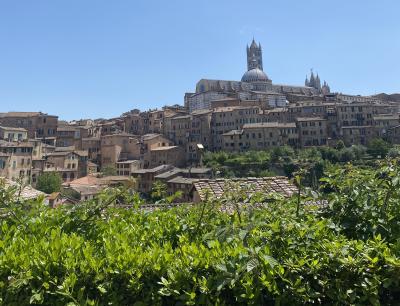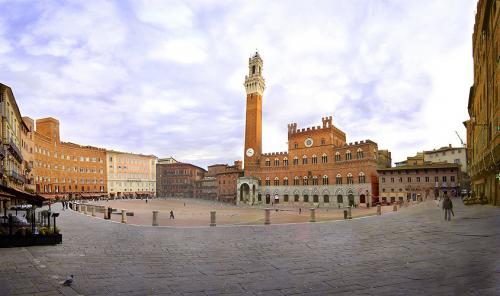Travel: 24 hours in Siena

SIENA - This medieval red-bricked city, nestled amongst the Tuscan hills, remains a relatively hidden gem of central Italy. It’s the perfect place to visit if you want a taste of Tuscany but want to avoid the swarms of Florence.
I arrived in Siena on the three hour afternoon coach from Tiburtina station in Rome. Despite its relative proximity to Rome, the lack of direct trains makes the city slightly more difficult to reach than Florence. The coach journey however, although slightly hot, takes you through the rolling Tuscan countryside and is actually rather pleasant - although an overnight stay in Siena would be preferable.
As soon as I stepped off the coach, my friend and I headed to a trattoria just within the city’s perimeter, its medieval walls, and we sat down to enjoy “pici al ragu” (a sort of “chubby spaghetti”, as it was explained to me, with a delicious meat-based tomato sauce) and a bottle of Vermentino wine. To finish off we tried the highly recommended “cantucci (Italian almond biscuits) e vin santo,” a trademark dessert of the city.
We then wandered the streets of the well-preserved, red-bricked city around aperitivo hour and watched the city’s bars fill up. It was then that I noticed the flags that adorn the small streets and change as you move through Siena’s 17 “contradas.” Indeed, the city’s 17 historic contradas (districts) extend outward from the sunken Piazza del Campo and seem to form a crucial part of the Sienese identity. Representatives from each contrada race on horseback every year in the famous Palio di Siena.
As part of the fundraising for the yearly Palio, each contrade holds events usually in the form of public parties for the city’s citizens to enjoy - complete with outside bars and often live music. The night I found myself in Siena it was the turn of the “Chiocciola” contrada to put on a show. An intriguing aspect of these public festivities is that they are not advertised - their location is entirely shared through word of mouth.
So, that evening, we set off with the crowd in search of the hidden venue - and eventually found the party in the spectacular sight of a sunken piazza filled with hundreds of people, soaking up the music in the evening breeze.
The next day, we explored Siena’s various tourist offerings. We started in the iconic Piazza del Campo, unique for its sunken fan shape and the site of Palazzo Pubblico, the Gothic town hall, and Torre del Mangia, a slender 14th-century tower with sweeping views. The Piazza is a great place to have a coffee and soak up the sun. I opted for an ”affogato al cafe” before we headed to the nearby Duomo.
The Duomo of Siena is a truly impressive sight and is unique for its use of dark marble. The exterior and interior are constructed of white and greenish-black marble in alternating stripes, with the addition of red marble on the façade. The inside of the Duomo is worth exploring - housing works by artists including Donatello and Bernini.
Inside, my friend pointed out to me a small door leading to a deceptively large room, the Piccolomini library - a must-see with its soaring, vibrant Pinturicchio frescoes and its choral sheet music dating from the 14th century.
Once you’ve covered Siena’s main sights, the Fortezza Medicea, just outside the medieval city walls, is the perfect stop for a lunchtime picnic. From the walls you can properly appreciate Siena’s isolated location - I was also happily surprised to find it almost empty, with just a few runners making the rounds.
What surprised me most was that although Siena is becoming ever more popular as a tourist destination, it didn’t feel overwhelmingly run-over with people unlike its neighbour, Florence. As a small city with narrow streets, I was semi-expecting long queues and an infrastructure that couldn't handle the masses in peak season, but instead I found a quaint, beautiful city whose character truly has the power to charm.
eb

© COPYRIGHT ITALIAN INSIDER
UNAUTHORISED REPRODUCTION FORBIDDEN


